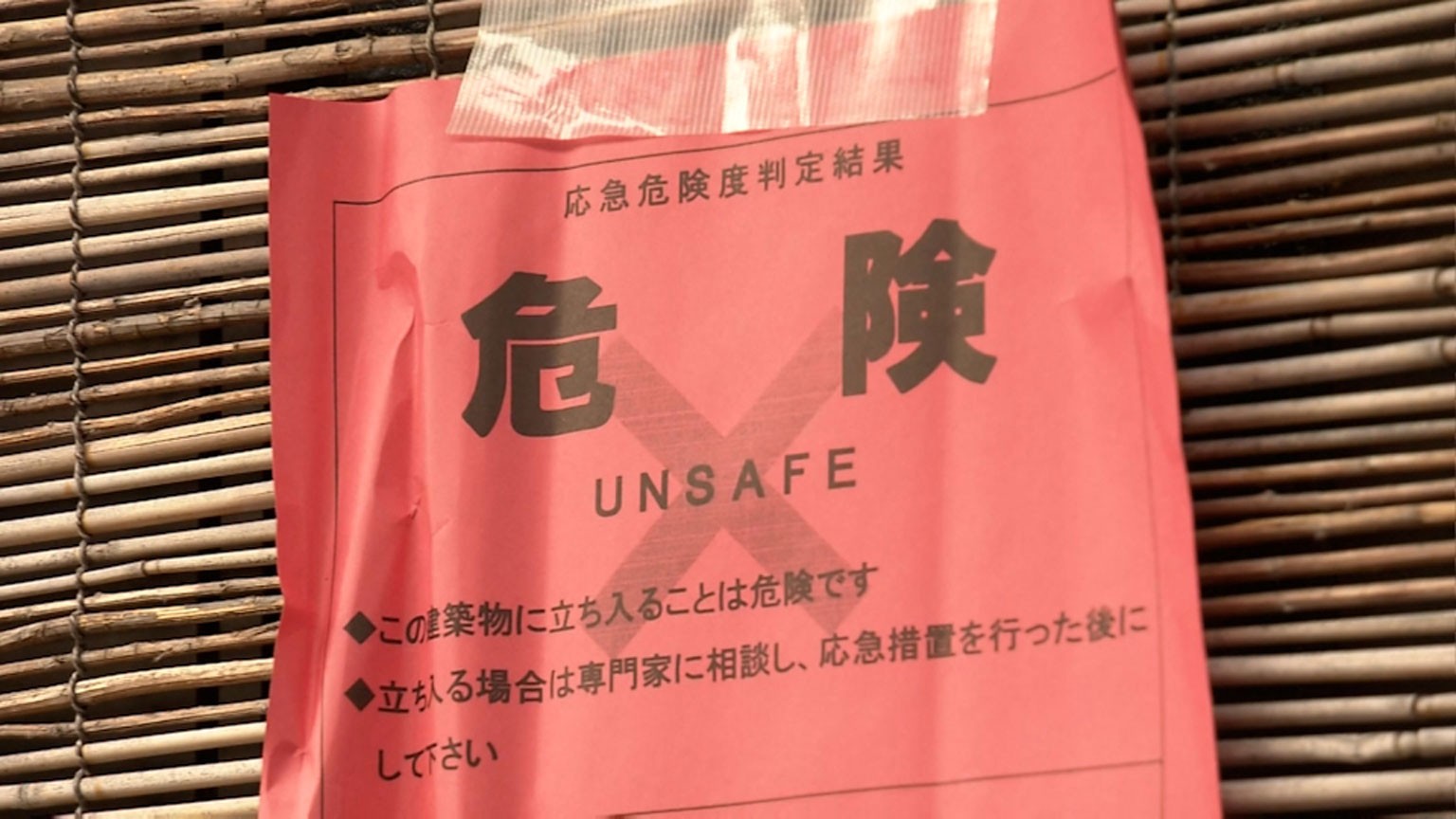Damaged houses in the disaster areas have red, yellow or green papers stuck on their outer walls. They reflect the results of risk assessments conducted by certified officials and architects.
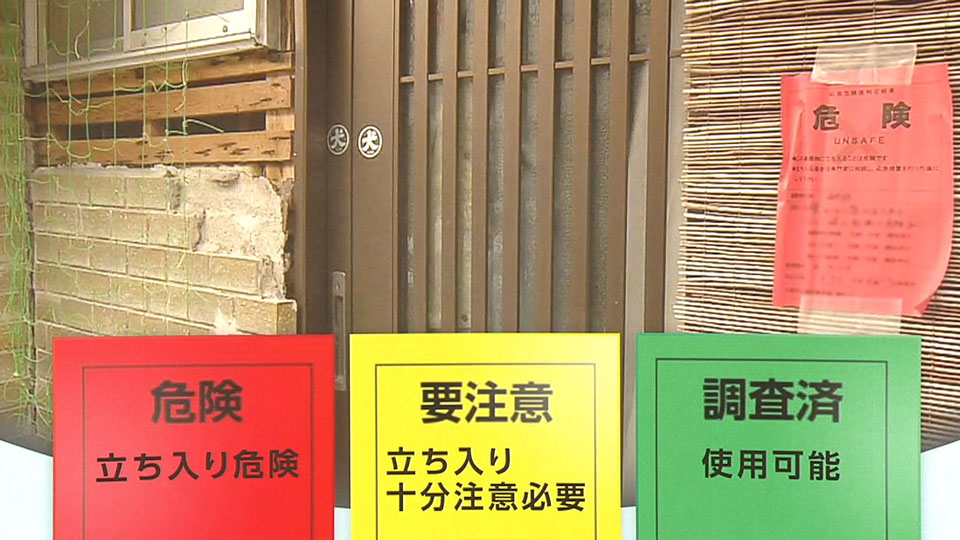
Nanao City in the central part of the Noto Peninsula has the prefecture's largest number of damaged houses.
One resident's house was deemed unsafe because a storehouse and concrete block wall behind it collapsed. Because he has a dog, he has decided to stay there even though he's concerned about the house's safety.
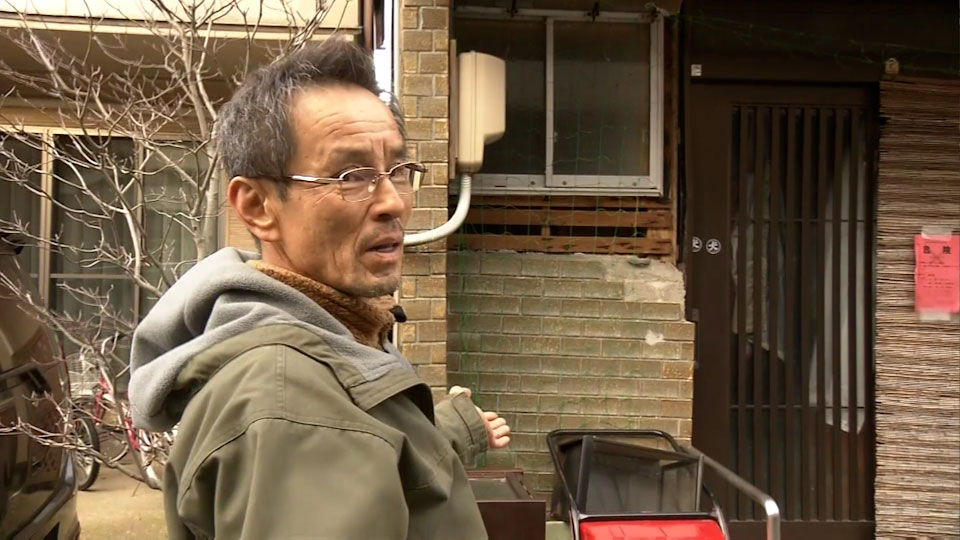
He says, "If I go to an evacuation center, my dog will bark and bother people. Even though my house has been deemed unsafe, I have no choice but to stay here."
One expert has been trying to ease residents' concerns.
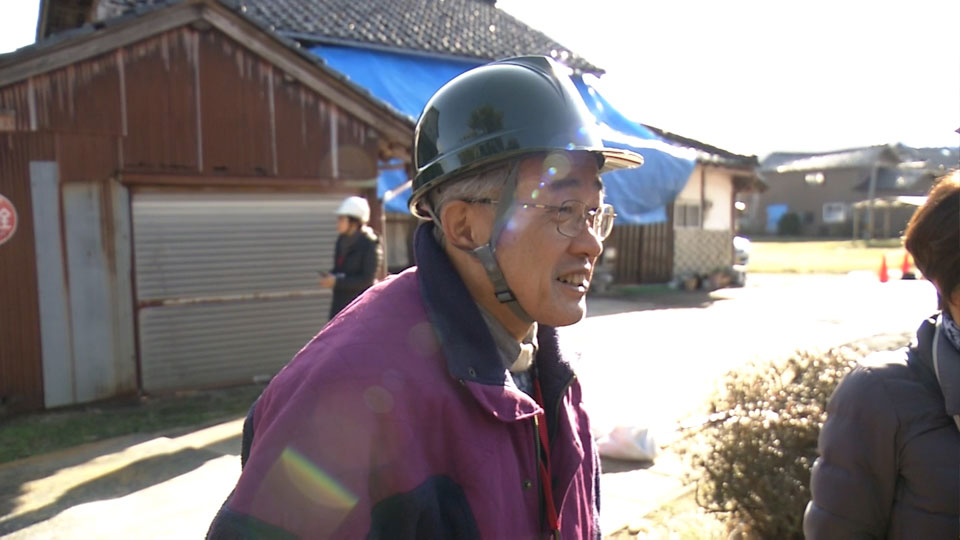
Hasegawa Junichi is the head of a volunteer group of architects based in Niigata Prefecture. The group has been helping to repair houses in disaster areas nationwide since a powerful earthquake hit Niigata 20 years ago.
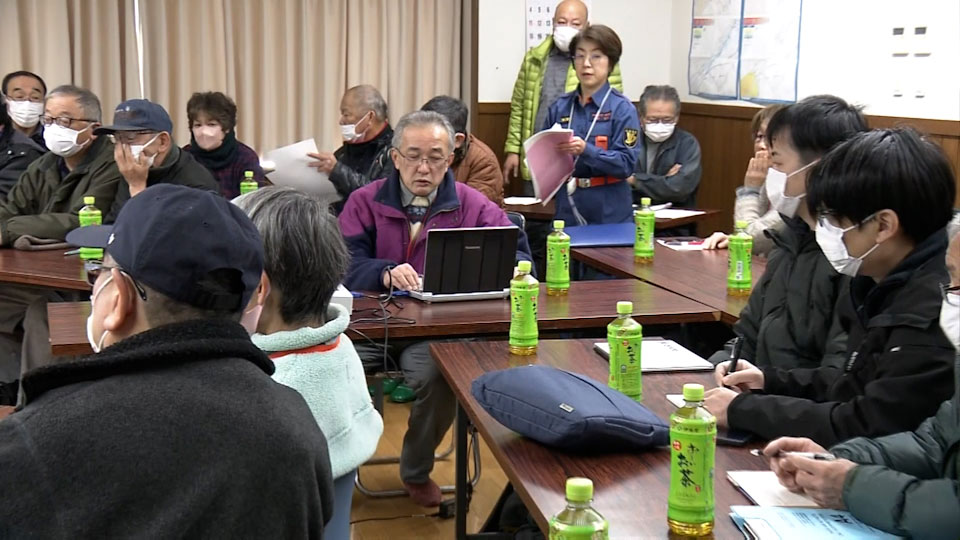
In response to local requests, Hasegawa is holding briefing sessions for people with damaged houses. At a session held in Nakanoto Town on February 3, residents said they were having trouble deciding whether to demolish or repair their houses.
Hasegawa explained that the purpose of red papers is to prevent potential injuries if aftershocks cause additional damage. He stressed that they do not necessarily mean the buildings cannot be used.
He explained that a house could be deemed unsafe simply because an air conditioner was found to be loose and could fall.
Hasegawa says four phases usually proceed disasters.
- Step 1. Emergency evacuation right after the disaster (one week)
- Step 2. Evacuee emergency response (several days to one month)
- Step 3. Provisional planning for rebuilding (one month to a year)
- Step 4. Permanent restoration (six months to several years)
Hasegawa also explained that in the past there have been cases in which people were less financially and psychologically impacted if they simply made emergency repairs and continued to live in their damaged houses. He advised residents to take timing into consideration when deciding how to proceed.
Hasegawa says, "People impacted by disasters have various problems. It's important to think carefully without becoming impatient."
Temporary housing units are also being built for evacuees.
The temporary housing units can house three to seven people.
As of February 6, nearly 14,000 people were still sheltering in Ishikawa Prefecture evacuation centers. The prefecture aims to start the construction of 3,000 temporary housing units by the end of March.
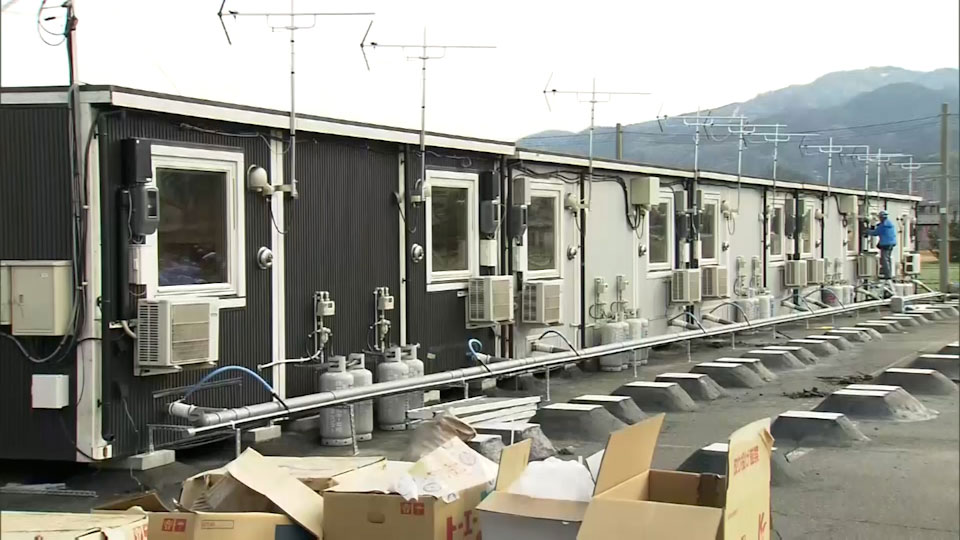
The first 18 temporary units were completed in central Wajima City and people began moving into them on February 3.
They feature insulation and heating to ensure their interiors stay warm during the Noto region's cold winter. Wajima City's water supply remains disrupted so the units have water tanks. They also come in two sizes. One can accommodate three people, while the other can house seven.
In addition to the temporary housing units, a system has been established that allows evacuees to move into private housing with the local municipality paying the rent for up to two years.
Even after moving to temporary housing, however, displaced residents face new challenges, including how to maintain their local communities, how to manage their children's schooling and how to revive their businesses.
